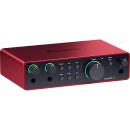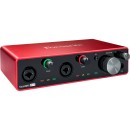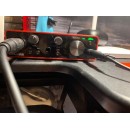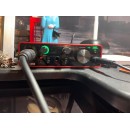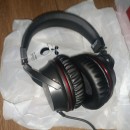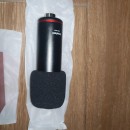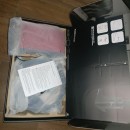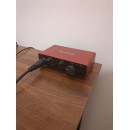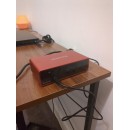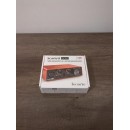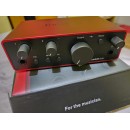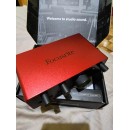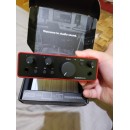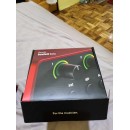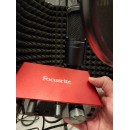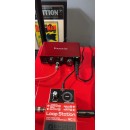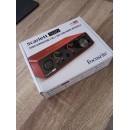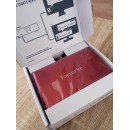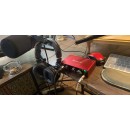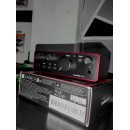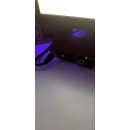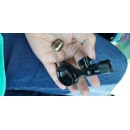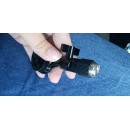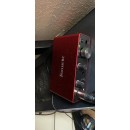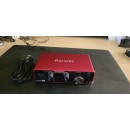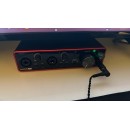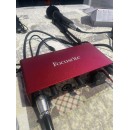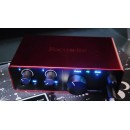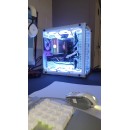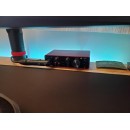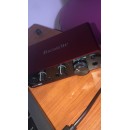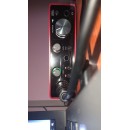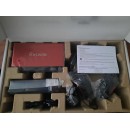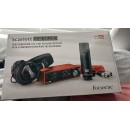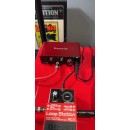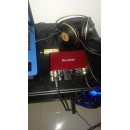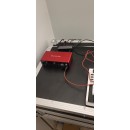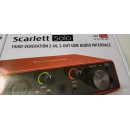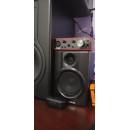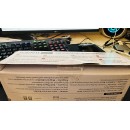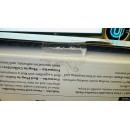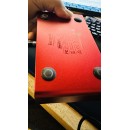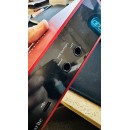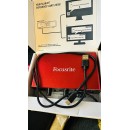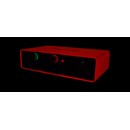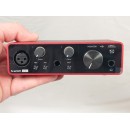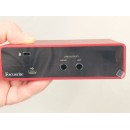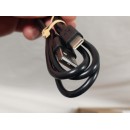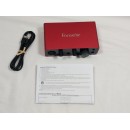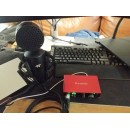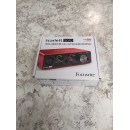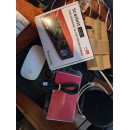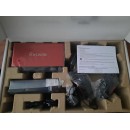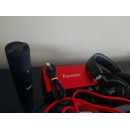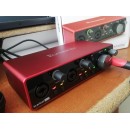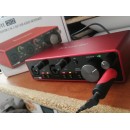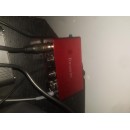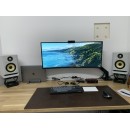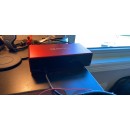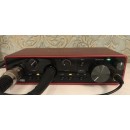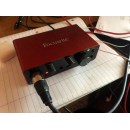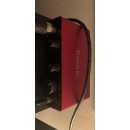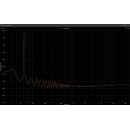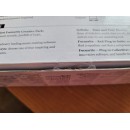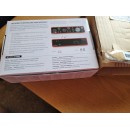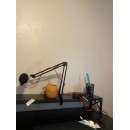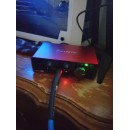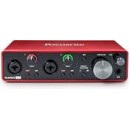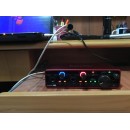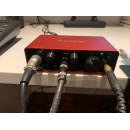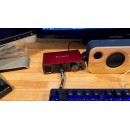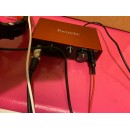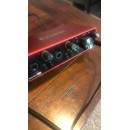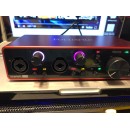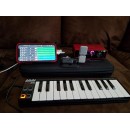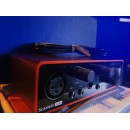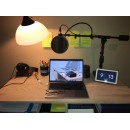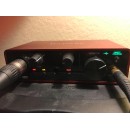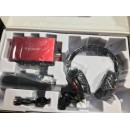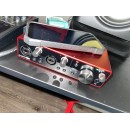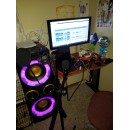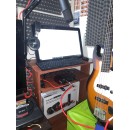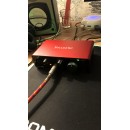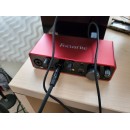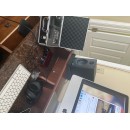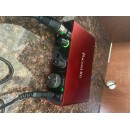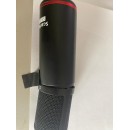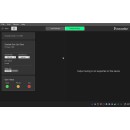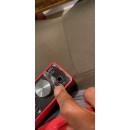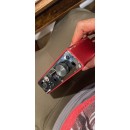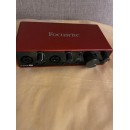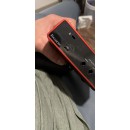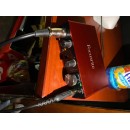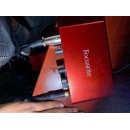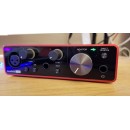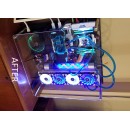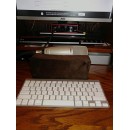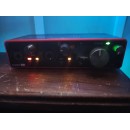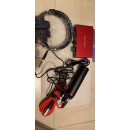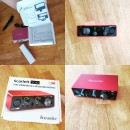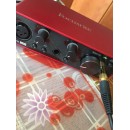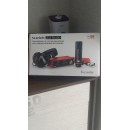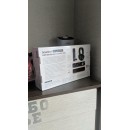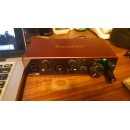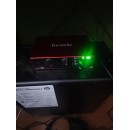Focusrite Scarlett 4i4 (3rd Gen) vs 2i2 (4th Gen): Comprehensive Comparison
The Scarlett 2i2 (4th Gen) is the latest iteration of Focusrite's acclaimed 2-in, 2-out interface. It features USB-C connectivity, which ensures faster data transfer rates and improved latency performance. This model is designed with simplicity and portability in mind, making it an excellent choice for solo artists or small setups. It includes two upgraded preamps with switchable Air mode, which adds brightness and presence to vocal and acoustic recordings. The 4th Generation also boasts enhanced dynamic range and clarity, making it a reliable choice for capturing high-fidelity audio.
On the other hand, the Scarlett 4i4 (3rd Gen) expands on the capabilities of the 2i2 by offering 4 inputs and 4 outputs, along with MIDI I/O. This makes the 4i4 ideal for more complex setups involving multiple instruments, MIDI controllers, or outboard gear. The 3rd Generation introduces improvements in preamp quality and conversion, providing a clear and detailed sound. Additionally, the 4i4 includes Focusrite's Loopback feature, which simplifies the process of streaming and recording calls or live performances by routing audio from different applications directly into your DAW.
In summary, the Focusrite Scarlett 2i2 (4th Gen) is perfect for those needing a compact, high-quality interface with cutting-edge USB-C connectivity, while the Scarlett 4i4 (3rd Gen) is suited for users who require additional inputs, outputs, and MIDI capabilities for a more versatile recording setup. Both interfaces maintain Focusrite's reputation for delivering exceptional audio performance and ease of use.
Specifications, Advantages, and Disadvantages of Focusrite Scarlett 4i4 (3rd Gen) and 2i2 (4th Gen)
| User Rating Based on Analysis of Reviews | |
|---|---|
|
Show More |
| Pros: | |
|---|---|
|
|
| Cons: | |
|---|---|
|
|
| Key Specs | |
|---|---|
| Channels of I/O | |
| Analog: 2 Inputs / 2 Outputs at 192 kHz |
Analog: 4 Input / 4 Output at 192 kHz |
| Maximum Sampling Rate | |
| 192 kHz / 24-Bit | 192 kHz / 24-Bit |
| Number of Microphone Inputs | |
| 2 | 2 Preamps |
| Analog Audio I/O | |
| 2x XLR 3-Pin Balanced Mic Input 2x 1/4" TRS Balanced/Unbalanced Line/Hi-Z Input (Front Panel) 2x 1/4" TRS Balanced Monitor Output 1x 1/4" TRS Headphone Output (Front Panel) |
2x Combo XLR-1/4" TRS Balanced/Unbalanced Mic/Line/Hi-Z Input (Front Panel) 2x 1/4" TRS Balanced Line Input 4x 1/4" TRS Balanced Line Output 1x 1/4" TRS Unbalanced Headphone Output (Front Panel) |
| Host Connection | |
| 1x USB-C | 1x USB-C |
| OS Compatibility | |
| macOS Windows |
macOS 10.12 or Later Windows 7 or Later |
| Power Requirements | |
| USB Bus Power, USB Power Adapter (Not Included) | USB Bus Power |
The Scarlett 2i2 (4th Gen) provides 2 channels of analog input and output, with a maximum sampling rate of 192 kHz at 24-bit resolution. It includes 2 XLR balanced mic inputs, 2 front-panel 1/4" TRS balanced/unbalanced line/Hi-Z inputs, and 2 rear-panel 1/4" TRS balanced monitor outputs. Additionally, it has a front-panel 1/4" TRS headphone output. This interface does not offer any digital audio I/O options. It connects to the host computer via USB-C and is compatible with both macOS and Windows operating systems. Power is provided through USB bus power or an optional USB power adapter, which is not included.
In contrast, the Scarlett 4i4 (3rd Gen) features 4 channels of analog input and output, also supporting a maximum sampling rate of 192 kHz at 24-bit resolution. It is equipped with 2 front-panel combo XLR-1/4" TRS balanced/unbalanced mic/line/Hi-Z inputs, 2 rear-panel 1/4" TRS balanced line inputs, and 4 rear-panel 1/4" TRS balanced line outputs, along with a front-panel 1/4" TRS unbalanced headphone output. This model includes MIDI I/O capabilities, expanding its connectivity for musicians using MIDI instruments. The Scarlett 4i4 connects to the host computer via USB-C and supports macOS 10.12 or later and Windows 7 or later. It is powered solely by USB bus power.
In summary, the Scarlett 2i2 (4th Gen) is a more straightforward interface with fewer I/O channels, ideal for solo artists or small home studio setups. Meanwhile, the Scarlett 4i4 (3rd Gen) offers greater flexibility with additional I/O channels, MIDI connectivity, and more extensive routing options, catering to more complex recording setups and musicians with MIDI equipment. Both interfaces maintain high audio quality with a 192 kHz sampling rate and are compatible with both macOS and Windows platforms.
| General | |
|---|---|
| Channels of I/O | |
| Analog: 2 Inputs / 2 Outputs at 192 kHz |
Analog: 4 Input / 4 Output at 192 kHz |
| Maximum Sampling Rate | |
| 192 kHz / 24-Bit | 192 kHz / 24-Bit |
| Number of Microphone Inputs | |
| 2 | 2 Preamps |
| Input Level Adjustment | |
| 2x Knob | 2x Knob |
| Expansion Slots | |
The Scarlett 2i2 USB-C Audio Interface (4th Generation) offers two analog inputs and two analog outputs at a maximum sampling rate of 192 kHz with a 24-bit resolution. It features two microphone inputs, each with its own input level adjustment knob, but lacks built-in DSP and expansion slots. This model is designed for simplicity and portability, making it an ideal choice for solo musicians, podcasters, and small home studios that require high-quality audio recording without additional complexity.
On the other hand, the Scarlett 4i4 USB Audio/MIDI Interface (3rd Generation) provides four analog inputs and four analog outputs, also supporting a maximum sampling rate of 192 kHz with 24-bit resolution. Similar to the 2i2, it includes two microphone preamps with individual input level adjustment knobs. However, the 4i4 stands out by offering additional I/O channels, making it more suitable for users who need to connect multiple instruments or audio sources simultaneously. Although it doesn't feature built-in DSP or expansion slots, its extra connectivity options and MIDI capability make it a versatile choice for more complex recording setups or small home studios that require more flexibility.
In summary, the Scarlett 2i2 (4th Generation) is perfect for users who need a straightforward, high-quality interface with two inputs and outputs, while the Scarlett 4i4 (3rd Generation) provides greater versatility with additional I/O channels and MIDI support, catering to more complex recording needs.
| Signal Processing | |
|---|---|
| Gain/Trim Range | |
| Mic/Line Inputs: Up to +69 dB Hi-Z Inputs: 62 dB |
Inputs: Up to +56 dB |
Gain/Trim Range: The Scarlett 2i2 (4th Gen) offers a significant gain range for its mic/line inputs, providing up to +69 dB, while its Hi-Z inputs offer up to 62 dB. This broad gain range is beneficial for capturing a wide variety of audio sources with high fidelity. In contrast, the Scarlett 4i4 (3rd Gen) offers a gain range of up to +56 dB for its inputs, making it slightly less versatile in handling high-gain requirements compared to the 2i2.
Pad: The Scarlett 4i4 (3rd Gen) includes a pad feature for its mic/line/Hi-Z inputs, allowing for a -10 dB reduction per channel. This can be particularly useful for managing loud audio sources and preventing clipping. The Scarlett 2i2 (4th Gen) does not specify having a pad feature, which might limit its handling of very loud input signals without additional external equipment.
High-Pass Filter and Solo/Mute: The Scarlett 4i4 (3rd Gen) lacks both a high-pass filter and solo/mute functionality. This absence means users may need to rely on external software or hardware to manage these functions. The 2i2 (4th Gen) does not specify the presence of these features either, suggesting a similar reliance on external solutions for these capabilities.
In summary, the Scarlett 2i2 (4th Gen) excels with its higher gain range, making it suitable for a broader array of recording situations, whereas the Scarlett 4i4 (3rd Gen) offers the added flexibility of a pad feature, which can be beneficial for managing high-volume inputs. However, both interfaces lack integrated high-pass filters and solo/mute functions, requiring users to consider additional methods for these needs.
| Connectivity | |
|---|---|
| Analog Audio I/O | |
| 2x XLR 3-Pin Balanced Mic Input 2x 1/4" TRS Balanced/Unbalanced Line/Hi-Z Input (Front Panel) 2x 1/4" TRS Balanced Monitor Output 1x 1/4" TRS Headphone Output (Front Panel) |
2x Combo XLR-1/4" TRS Balanced/Unbalanced Mic/Line/Hi-Z Input (Front Panel) 2x 1/4" TRS Balanced Line Input 4x 1/4" TRS Balanced Line Output 1x 1/4" TRS Unbalanced Headphone Output (Front Panel) |
| Phantom Power | |
| 48 V, Selectable On/Off | 48 V, Selectable On/Off (on 2 Channels) |
| Digital Audio I/O | |
| Host Connection | |
| 1x USB-C | 1x USB-C |
| Host Connection Protocol | |
| USB 2.0 | USB 2.0 |
| MIDI I/O | |
|
1x DIN 5-Pin Input 1x DIN 5-Pin Output |
|
The Scarlett 2i2 (4th Gen) offers 2x XLR 3-Pin Balanced Mic Inputs and 2x 1/4" TRS Balanced/Unbalanced Line/Hi-Z Inputs on the front panel, facilitating straightforward recording setups for small studios or solo musicians. For output, it includes 2x 1/4" TRS Balanced Monitor Outputs and a single 1/4" TRS Headphone Output on the front panel. This model provides 48V phantom power, selectable on or off, but lacks digital audio I/O, MIDI I/O, and network I/O. Additionally, it connects to the host via 1x USB-C and utilizes USB 2.0 protocol while also providing a secondary USB-C for power input.
In contrast, the Scarlett 4i4 (3rd Gen) expands its versatility with 2x Combo XLR-1/4" TRS Balanced/Unbalanced Mic/Line/Hi-Z Inputs on the front panel, alongside 2x 1/4" TRS Balanced Line Inputs, and 4x 1/4" TRS Balanced Line Outputs. For monitoring, it includes 1x 1/4" TRS Unbalanced Headphone Output on the front panel. Like the 2i2, it also features 48V phantom power, but it applies to both channels. The 4i4 stands out with its MIDI capabilities, offering 1x DIN 5-Pin Input and 1x DIN 5-Pin Output, catering to users who need MIDI connectivity for more complex setups. It connects to the host via 1x USB-C and uses the USB 2.0 protocol.
In summary, the Scarlett 2i2 (4th Gen) is geared towards users who need a straightforward and compact interface with essential recording features, while the Scarlett 4i4 (3rd Gen) offers more extensive input/output options and MIDI connectivity, making it suitable for more advanced or complex recording environments.
| Performance | |
|---|---|
| Frequency Response | |
| XLR Mic Inputs: 20 Hz to 20 kHz ±0.06 dB 1/4" Line Inputs: 20 Hz to 20 kHz 0.05 dB 1/4" Hi-Z Inputs: 20 Hz to 20 kHz 0.15 dB |
Inputs: 20 Hz to 20 kHz ±0.1 dB |
| Maximum Input Level | |
| XLR Mic: 16 dBu 1/4" Line: 22 dBu 1/4" Hi-Z: 12 dBu |
Mic Inputs: +9 dBu (Min Gain) +16 dBu (Min Gain, with Pad) Hi-Z Inputs: +12.5 dBu (Min Gain) +14 dBu (Min Gain, with Pad) Line Inputs: +22 dBu (Min Gain) +29 dBu (Min Gain, with Pad) |
| Maximum Output Level | |
| 1/4" Line: +16 dBu |
Monitor/Line Outputs: +15.5 dBu at 0 dBFS Headphone Outputs: +7 dBu |
| Impedance | |
| XLR Mic Inputs: 3 Kilohms 1/4" Line Inputs: 60 Kilohms 1/4" Hi-Z Inputs: 1 Megohms 1/4" Line Outputs: 100 Ohms 1/4" Headphone Outputs: < 50 Ohm |
Mic Inputs: 3 Kilohms Hi-Z Inputs: 1.5 Megohms Line Inputs: 60 Kilohms Line Outputs: 430 Ohms Headphone Outputs: < 1 Ohm |
| Dynamic Range | |
| XLR Mic Inputs: 116 dBA 1/4" Line Inputs: 115.2 dBA 1/4" Hi-Z Inputs: 113 dBA 1/4" Line Outputs: 120 dB 1/4" Headphone: 112 dB (at 33 Ohms) 115 dB (at 300 Ohms) Digital A/D Converters: 120 dB Digital D/A Converters: 130 dBA |
Mic Inputs: 111 dBA Hi-Z Inputs: 110 dBA Line Inputs: 110.5 dBA Line Outputs: 108 dBA Headphone Outputs: 104 dBA |
| THD+N | |
| XLR Mic Inputs: -100 dB (at 8 dB Gain) 1/4" Line Inputs: -100 dB (at 8 dB Gain) 1/4" Hi-Z Inputs: -80 dB (at Minimum Gain) 1/4" Line Outputs: -109 dB 1/4" Headphone Outputs: -99 dB (at 33 Ohms) -108 dB (at 300 Ohms) Digital A/D Converters: -110 dB Digital D/A Converters: -115 dB |
Mic Inputs: < 0.0012% Hi-Z Inputs: < 0.03% Line Inputs: < 0.002% Line Outputs: < 0.002% Headphone Outputs: < 0.002% |
| EIN | |
| XLR Mic Inputs: -127 dBu A-Weighted |
Mic Inputs: -128 dBu A-Weighted |
In terms of frequency response, the Scarlett 2i2 offers XLR mic inputs with a response of 20 Hz to 20 kHz ±0.06 dB, 1/4" line inputs with 20 Hz to 20 kHz 0.05 dB, and 1/4" Hi-Z inputs with 20 Hz to 20 kHz 0.15 dB. The 4i4 provides a slightly broader specification for inputs, with a frequency response of 20 Hz to 20 kHz ±0.1 dB across its inputs.
The maximum input level for the Scarlett 2i2 is 16 dBu for XLR mic, 22 dBu for 1/4" line, and 12 dBu for 1/4" Hi-Z inputs. For the 4i4, the mic inputs can handle +9 dBu (Min Gain) or +16 dBu (Min Gain, with Pad), Hi-Z inputs can manage +12.5 dBu (Min Gain) or +14 dBu (Min Gain, with Pad), and line inputs can take +22 dBu (Min Gain) or +29 dBu (Min Gain, with Pad).
Regarding maximum output levels, the Scarlett 2i2 outputs +16 dBu through 1/4" line outputs and offers headphone output power of 32 mW into 33 Ohms and 22 mW into 300 Ohms. The Scarlett 4i4 has monitor/line outputs of +15.5 dBu at 0 dBFS and headphone outputs of +7 dBu.
The impedance characteristics show that both interfaces have XLR mic inputs with 3 Kilohms. The Scarlett 2i2 has 60 Kilohms for 1/4" line inputs and 1 Megohms for 1/4" Hi-Z inputs, with 100 Ohms for 1/4" line outputs and less than 50 Ohms for 1/4" headphone outputs. The Scarlett 4i4 provides 1.5 Megohms for Hi-Z inputs, 60 Kilohms for line inputs, 430 Ohms for line outputs, and less than 1 Ohm for headphone outputs.
When it comes to dynamic range, the Scarlett 2i2 offers 116 dBA for XLR mic inputs, 115.2 dBA for 1/4" line inputs, 113 dBA for 1/4" Hi-Z inputs, 120 dB for 1/4" line outputs, and headphone dynamic ranges of 112 dB at 33 Ohms and 115 dB at 300 Ohms. The A/D converters feature a dynamic range of 120 dB and D/A converters of 130 dBA. The Scarlett 4i4 provides a dynamic range of 111 dBA for mic inputs, 110 dBA for Hi-Z inputs, 110.5 dBA for line inputs, 108 dBA for line outputs, and 104 dBA for headphone outputs.
In terms of Total Harmonic Distortion plus Noise (THD+N), the Scarlett 2i2 achieves -100 dB for XLR mic and 1/4" line inputs at 8 dB Gain, -80 dB for 1/4" Hi-Z inputs at Minimum Gain, -109 dB for 1/4" line outputs, -99 dB for 1/4" headphone outputs at 33 Ohms, and -108 dB at 300 Ohms. The A/D and D/A converters have THD+N values of -110 dB and -115 dB, respectively. The Scarlett 4i4 demonstrates THD+N of less than 0.0012% for mic inputs, less than 0.03% for Hi-Z inputs, less than 0.002% for line inputs and outputs, and less than 0.002% for headphone outputs.
Finally, the Equivalent Input Noise (EIN) for XLR mic inputs is -127 dBu A-Weighted for the Scarlett 2i2 and -128 dBu A-Weighted for the Scarlett 4i4.
Both interfaces offer robust performance, but the Scarlett 2i2 provides slightly better dynamic range and THD+N specifications while the Scarlett 4i4 offers higher maximum input levels and additional I/O flexibility with MIDI capability.
| Digital Audio | |
|---|---|
| Sample Rates | |
| 44.1 / 48 / 88.2 / 96 / 176.4 / 192 kHz | Up to 192 kHz (AD/DA Conversion) |
| Bit Depths | |
| 24-Bit | Up to 24-Bit (AD/DA Conversion) |
| Sync Sources | |
| Internal | Internal |
The Scarlett 2i2 4th Generation supports a range of sample rates including 44.1, 48, 88.2, 96, 176.4, and 192 kHz. It maintains a consistent bit depth of 24-bit across all sample rates, ensuring high-resolution audio capture and playback. The sync source for the Scarlett 2i2 is internal, allowing it to operate independently without requiring external synchronization.
On the other hand, the Scarlett 4i4 3rd Generation also supports sample rates up to 192 kHz for both analog-to-digital (AD) and digital-to-analog (DA) conversion. Like the 2i2, it supports bit depths up to 24-bit, ensuring high-quality audio fidelity. However, unlike the 2i2, it does not feature sample rate conversion, meaning it directly processes audio at the incoming sample rate without any internal conversion. Similar to the 2i2, the sync source for the Scarlett 4i4 is internal.
In summary, both interfaces provide robust audio quality with support for high sample rates and bit depths, though the Scarlett 4i4 offers a slightly broader scope in sample rate and bit depth capabilities. The Scarlett 2i2 is equipped with USB-C connectivity, which might be preferable for modern setups, whereas the Scarlett 4i4 offers additional MIDI interface capabilities, catering to users who require MIDI connectivity along with audio interfacing.
| Audio Storage & Playback |
|---|
| Compatibility | |
|---|---|
| OS Compatibility | |
| macOS Windows |
macOS 10.12 or Later Windows 7 or Later |
The Focusrite Scarlett 2i2 (4th Generation) is compatible with both macOS and Windows operating systems. Additionally, it extends its functionality to mobile devices, specifically iPads, making it a versatile choice for those who require portability and mobile recording capabilities. This inclusion of iPadOS compatibility is a significant advantage for users who prefer to work on-the-go or in various recording environments.
On the other hand, the Focusrite Scarlett 4i4 (3rd Generation) supports macOS 10.12 or later and Windows 7 or later, ensuring broad compatibility with a wide range of operating systems. However, it does not offer compatibility with mobile devices, which limits its use to more traditional desktop or laptop-based recording setups. This interface requires an available USB 2.0 port and includes a USB cable. An internet connection is also necessary for downloading the required software and drivers, which is an essential consideration for initial setup and updates.
In summary, the 4th Generation Focusrite Scarlett 2i2 stands out with its additional mobile app compatibility for iPadOS, making it more flexible for diverse recording needs. In contrast, the 3rd Generation Focusrite Scarlett 4i4 remains a robust option for users who operate within the macOS and Windows environments and do not require mobile device support.
| Power | |
|---|---|
| Power Requirements | |
| USB Bus Power, USB Power Adapter (Not Included) | USB Bus Power |
In contrast, the Scarlett 4i4 (3rd Generation) is solely powered by USB bus power. This streamlined power requirement simplifies the setup process and eliminates the need for additional power adapters. However, it may be more dependent on the stability and adequacy of the USB power source from the connected computer or device.
Overall, the Scarlett 2i2 (4th Generation) provides more power options and potentially greater power stability due to its ability to use an external power adapter, while the Scarlett 4i4 (3rd Generation) offers a more straightforward, single-source power solution via USB bus power.
| Physical | |
|---|---|
| Dimensions | |
| 7.1 x 4.6 x 1.87" / 18 x 11.7 x 4.75 cm | 7.28 x 4.71 x 1.87" / 18.49 x 11.96 x 4.75 cm |
| Weight | |
| 1.3 lb / 595.0 g | 1.4 lb / 0.6 kg |
In terms of dimensions, the Scarlett 2i2 measures 7.1 x 4.6 x 1.87 inches (18 x 11.7 x 4.75 cm), while the Scarlett 4i4 is slightly larger at 7.28 x 4.71 x 1.87 inches (18.49 x 11.96 x 4.75 cm). This makes the Scarlett 2i2 marginally more compact, which could be advantageous for users with limited space.
When comparing weight, the Scarlett 2i2 weighs 1.3 lb (595.0 g), whereas the Scarlett 4i4 is slightly heavier at 1.4 lb (0.6 kg). While this difference is minimal, the lighter weight of the Scarlett 2i2 might be preferable for those who need to transport their audio interface frequently.
An additional feature of the Scarlett 4i4 is its inclusion of a Kensington Security Slot, which provides an anti-theft measure. This feature is not mentioned for the Scarlett 2i2, making the Scarlett 4i4 potentially more secure for use in shared or public environments.
In summary, the Focusrite Scarlett 2i2 USB-C Audio Interface (4th Generation) is slightly more compact and lighter than the Scarlett 4i4 USB Audio/MIDI Interface (3rd Generation). However, the Scarlett 4i4 offers an added security feature with its Kensington Security Slot. This comparison highlights that while the Scarlett 2i2 may be more portable, the Scarlett 4i4 provides additional security, which could be a deciding factor based on the user's specific needs.
| Packaging Info | |
|---|---|
| Package Weight | |
| 1.9 lb | 1.81 lb |
| Box Dimensions (LxWxH) | |
| 8.2 x 7 x 2.6" | 8.5 x 6.5 x 2.4" |
Starting with the Focusrite Scarlett 2i2 USB-C Audio Interface (4th Generation), it has a package weight of 1.9 lb and box dimensions of 8.2 x 7 x 2.6 inches. This indicates a compact and slightly heavier build compared to its counterpart, making it robust yet portable. The 4th Generation Scarlett 2i2 is designed with USB-C connectivity, which is known for faster data transfer rates and greater compatibility with modern devices. This generation is expected to offer enhancements in audio quality, latency, and overall performance, catering to musicians and producers who require high-fidelity sound and low latency for their recordings.
On the other hand, the Focusrite Scarlett 4i4 USB Audio/MIDI Interface (3rd Generation) has a package weight of 1.81 lb and box dimensions of 8.5 x 6.5 x 2.4 inches. Slightly lighter and with a different form factor, this interface is tailored for users who need more connectivity options. The Scarlett 4i4 features additional inputs and outputs compared to the 2i2, as well as MIDI connectivity, making it more versatile for users who work with multiple audio sources and MIDI devices. The 3rd Generation Scarlett 4i4 maintains USB connectivity, ensuring reliable performance and widespread compatibility with various systems.
In summary, the Focusrite Scarlett 2i2 USB-C (4th Generation) is distinguished by its updated USB-C interface, potentially improved audio performance, and slightly more robust build. In contrast, the Scarlett 4i4 (3rd Generation) offers greater connectivity options including MIDI, with a lighter and slightly different form factor, making it a versatile choice for more complex audio setups.
| Customer Images | |
|---|---|
| Videos | |
|---|---|
|
|
|
